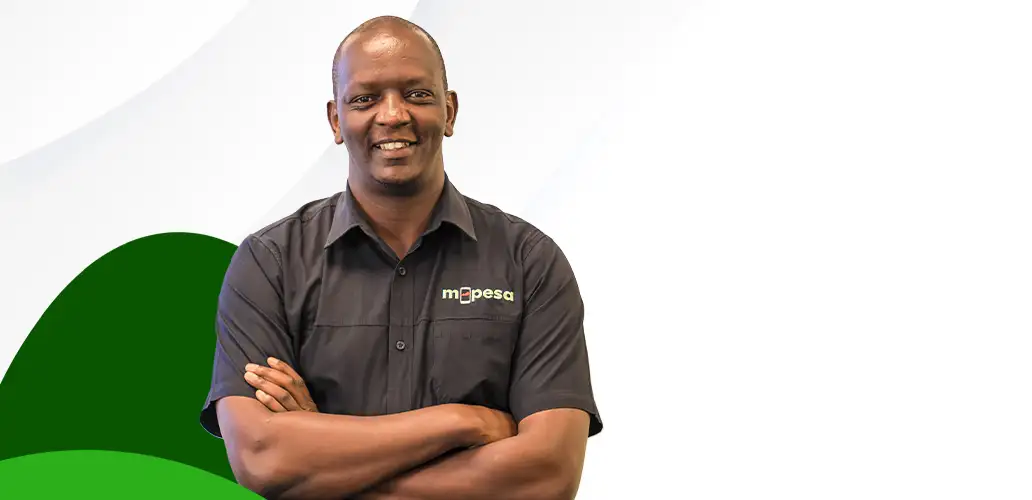When Sitoyo Lopokoiyit talks about M-PESA, his voice carries the weight of history. Few people alive have seen the service evolve as closely as he has. And even fewer have shaped it from as early as 2005, long before the world knew that a Kenyan experiment would redefine financial services globally.
“What happened in March 2007 changed financial services completely in the world,” he says. “M-PESA is like breathing when it’s working, you don’t notice it. But when it stops even for five minutes, the whole country feels it. The president must know.”
Where It Began
Nearly two years before M-PESA launched, the Safaricom team reached out to Caltex, then owned by Chevron, looking to use service stations as cash-in, cash-out points.
The person they were connected to was Sitoyo, at the time a Business Advisor and Merchandising Manager.
“A lady named Susie Lonie reached out,” he recalls. “They wanted to use Caltex stations for agent services, but they assumed we owned and managed the stations. In truth, we owned them but franchised them to dealers.”
That misunderstanding led to an unexpected breakthrough.
From that discussion between Caltex, Sitoyo and the early M-PESA team, the aggregator model was born.
Sitoyo even tested early versions of the service personally, including walking with Michael Joseph to a fuel station in Parklands to pilot the system before launch.
Though he had been involved informally since 2005, Sitoyo officially joined Safaricom in 2011 as Head of M-PESA Strategy and Business Development. He later moved to Vodacom Tanzania as Director of M-Commerce, then returned to Kenya as Safaricom’s Chief Financial Services Officer, before becoming the CEO of M-PESA Africa.
Across these roles, he helped guide M-PESA from a promising innovation to a continental financial infrastructure.
Today, M-PESA has over 60 million customers, 5 million businesses, operates across 8 African markets and sees over 89 million transactions every day in Kenya alone. It accounts for 42% of Safaricom’s revenue
Sitoyo credits the early team including Nick Hughes, Paul Makin, and Susie Lonie for instilling a culture that still defines the platform.
“They had passion for financial inclusion. The DNA they set then is still alive today.”
This passion is what drove some of M-PESA’s most transformative decisions.
One milestone Sitoyo calls “one of the most innovative” was the creation of the M-PESA Braille watch, enabling visually impaired customers to transact independently.
“Six million Kenyans are visually impaired,” he says. “Bringing them into the financial system is massive.”
In 2012, as Safaricom upgraded its platforms, some products were at risk of being discontinued and these include a then-unpopular “Pay by M-PESA,” used only in Uchumi and Nakumatt.
Sitoyo, alongside colleagues Boniface and Anne, argued to keep and reinvent it.
Supported by leaders such as Betty Mwangi, Bob Collymore and Peter Arina, they built a new concept: Lipa na M-PESA.
They set a bold target of 100,000 merchants in six months. They achieved it in four. Today, Lipa na M-PESA is a pillar of Kenya’s digital commerce.
On Fuliza Sitoyo says, “I knew what Fuliza was, but I said I’m not launching it as a commercial product,” he says. Instead, the team simply switched it on and notified customers by SMS. What followed was staggering 4 million customers in 2 days and KES 6 billion lent within 10 days. “It’s the most successful product we’ve ever launched on the M-PESA platform.”
Pochi la Biashara allows users to separate personal money from business money on the same SIM. It began in Tanzania and has resonated deeply with micro-entrepreneurs across Africa. “It’s a big differentiator for small businesses,” Sitoyo says.
Sitoyo is candid about failures. “We opened India, we closed. Romania, we closed. South Africa, we tried twice.” But in other markets, Tanzania, Mozambique, DRC, Lesotho, and now Ethiopia, M-PESA is scaling rapidly, sometimes faster than Kenya. “What started in Kenya has spawned very successful M-PESA markets,” he says.
As the platform turns 18, Sitoyo reflects on its global influence. “There are over 200 countries that have introduced mobile money because of what started in Kenya.”
A journey that began in a fuel station boardroom has grown into a global blueprint for financial inclusion.
For these and more stories, follow us on X (Formerly Twitter), Facebook, LinkedIn and Telegram. You can also send us tips or reach out at [email protected].
Also Read: Safaricom to Migrate M-Pesa to Fintech 2.0 to Power the Next Phase of Mobile Money



